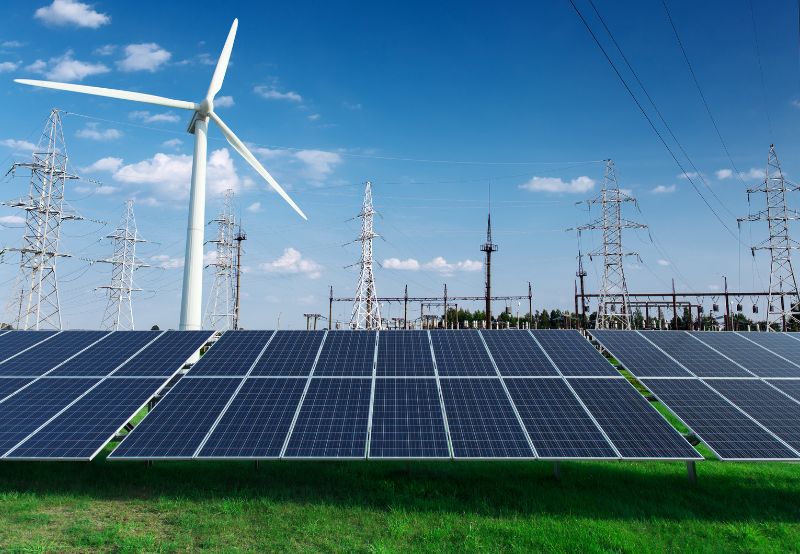India’s Clean Energy Push Must Prioritize Avoiding Land Conflicts
Renewable energy projects caught in a vortex of community opposition
August 12, 2025
Follow Mercom India on WhatsApp for exclusive updates on clean energy news and insights
As India seeks to achieve ambitious renewable energy goals in the near and medium terms, project developers face a daunting challenge: securing land.
Three recent developments point to the enormity of the challenge. It is not only private project proponents that face land acquisition hurdles, but government agencies as well.
- In July this year, protests erupted in Andhra Pradesh’s Nellore district, with farmers fiercely opposing parting with up to 8,000 acres of ‘fertile’ land for a gigascale integrated ingot to solar module manufacturing facility. Farmers, activists, and other stakeholders have held highway blockades. A public consultation turned stormy, with revenue department officials coming under fire.
- In June, the Assam government had to cancel a 1 GW solar project after tribal communities vehemently protested the government’s plan to acquire their lands. The cancellation followed the Asian Development Bank’s withdrawal of its approval for a $434.25 million loan for the project due to opposition to the project.
- In Karnataka, a 2 GW pumped storage project proposed with an investment of $918 million is in the crosshairs of landowners who feel threatened by the loss of land and livelihoods if their lands are taken away.
Over the years, several solar and wind energy projects across India have been scrapped or delayed due to community opposition. The disputes have revolved around compensation for land lost to the projects, land lease rent, and the use of threats or coercion against landholders. Many projects have been embroiled in litigation, from the revenue authorities up to the Supreme Court.
Securing large contiguous land parcels for renewable projects in India is an extremely complex process. Land fragmentation, unclear ownership and titles, a lack of land records, and bureaucratic delays in acquisition approvals are bottlenecks impeding renewable energy development. Landholder reluctance and interest group-led opposition further complicate the process.
It is not only solar and wind projects that face challenges from land acquisition. Transmission projects are also affected significantly, with landholder opposition and conflicts over right-of-way delaying several of them.
Stakeholder Buy-in
To promote renewable energy development, India has exempted solar and wind projects from the mandatory requirement for large industries to conduct social impact assessments and environmental impact assessments. In several states, conflict has arisen when projects are on government-owned land. Often, marginalized and landless communities make use of such land, and when they are displaced, they become aggrieved. This results in companies losing the social license to operate.
While some companies assess the socio-economic impact of their projects in compliance with international best practices, the majority of projects fail to do so. This has led to projects running into a welter of opposition in the absence of a buy-in from the stakeholders.
A rule of thumb is that approximately 4-5 acres of land are required to put up a 1 MW solar project. Developers usually secure the land on lease for up to 25 years, or the government acquires it on their behalf. The landowners are paid a mutually agreed-upon annual land lease rent.
India has walked the talk on its energy transition agenda. It recently hit the target of installing 50% non-fossil fuel-based energy capacity five years in advance. But its target for 2047 is a staggering 1,800 GW of renewable energy capacity, which the government says is necessary to meet rising power demand. While the government has demonstrated a long-term commitment to the energy transition, it remains unclear how it plans to make land available to achieve the target.
The problem is not the availability of land. India has plenty of it. Rajasthan, the state with the highest solar energy capacity, is home to some of the largest tracts of unfragmented, non-arable land. However, the state cannot consume all the power generated. Transporting the extra power generated to states where it is required comes at a cost.
The challenge for the government and private developers is to find a way to balance the imperatives of industrial development with the interests of landowners. Recently, the Karnataka government stopped the process of acquiring 1,777 acres of land for an aerospace park on the outskirts of Bengaluru, following an over three-year protest by farmers. This episode has a valuable lesson for policymakers and administrators. These were fertile agricultural lands and should have been left alone. Instead, the government went ahead with the acquisition process only to back down after a steadfast fight by the landowners.
Ironically, it was Karnataka that set an example with a more equitable land acquisition model for the 2 GW Pavagada solar park, leased at an annual rent that was largely acceptable to the 13,000 landowners struggling for sustenance in one of the most drought-prone regions of the state. It may not have been the best deal for the farmers, but they might have been worse off than before if not for the project.
Land is the elephant in the room, and India must address it with a sense of urgency to achieve an energy transition that places clean energy and social equity on the same footing.
